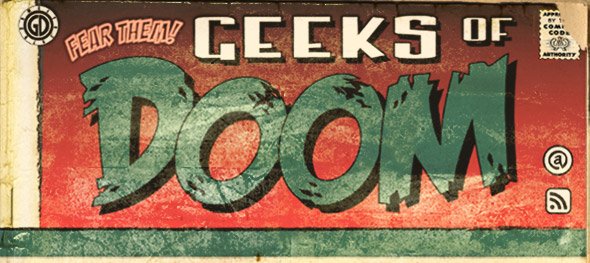
Today marks the birthday of the late Tex Avery, the master class animator who stretched the boundaries of the cartoon and produced work during the 1940s and the 1950s that completely changed the game in terms of what the genre could achieve.
Starting at Walter Lantz’s studio right before their heyday in the animation ring and then jumping ship to direct some Warner Brothers and especially MGM’s finest and funniest cartoons of all-time, the work of Tex Avery stands and remains akin to a cachet of symphonies written by Beethoven or the works of Duke Ellington.
It is unthinkable that any animation style that bends normalcy and utilizes a warped sensibility in hyper fast-paced worlds with egghead and eccentric characters which borderlined on being almost clinically insane, all while making the audience viewing these short films howl with stomach-rupturing laughter, doesn’t owe some sort of credence to the work first set forth by Fred “Tex” Avery. Whereas the animation medium was mostly locked in a stranglehold by the lovely rendered, yet heavily pedestrian and pandering to children works that came from the studios and inkwells of the employees of The Walt Disney Company, Tex Avery was one of the first to shatter those animation conventions. Avery created cartoons that were unapologetic, smart, extremely sharp, blink if you’ll miss it, hyper kinetic short films that were more for the adult crowd than anything else. He had an ironic eye (literally, an accident during some horseplay with cohorts at MGM had gotten a thumbtack lodged into his eye, causing him to lose sight in it) and a mind and imagination that knew absolutely no boundaries and topped itself with each successive thought.

His attitude toward the medium was that it was a medium that was created within itself, and thus should have a take no prisoners, you can do anything mentality to it, because since it was created from the imagination within, there were no limits, in essence, anything could be achieved and done. And no one — not great animators who had their own incredible sensibilities and keen eyes to sharp memorable cartoons of the era; not Chuck Jones, Friz Freleng, Frank Tashlin, Walter Lantz, or Bob Clampett, who came the closest to being side by side with Avery in terms of the wacky worlds and characterizations in which characters were rubber-limbed and wooly wild-eyed, with bodies that seemed to be made more from a Slinky than a presumed flesh and blood in the animation; or latter day animation prophets like Ren and Stimpy’s John Kricfalusi or Spongebob Squarepants’ Stephen Hillenbur — came even close to the sprawlingly, roundhouse kick of imagination to the chest that Tex Avery achieved time and time again in his mini-masterpieces. And there are many; a body of work that’s almost flawless and memorable, influential, and so mold-breaking that it never even had a mold to begin with.

Although he did not singlehandedly create Bugs Bunny while working at Warner Brothers studios in his early years of his career, he did direct the short A Wild Hare in 1940, which was one of Bugs’ earliest and pretty much laid the groundwork and foundation for the Bugs Bunny prototype most remembered, the cackling sarcastic rabbit who outwitted and playfully snared his quarry and foes with whatever comic guise it took to do so. A Wild Hare lays firmly down the template for many of the set pieces which became standard Bugs as the years followed and he became one of animations brightest characters (especially the many run ins he had with hapless hunter Elmer Fudd). He is also attributed for providing Bugs’ catchphrase, “What’s Up Doc?” which became part of the pop cultural lexicon and is still remembered as one of the key associations with Bugs Bunny to this very day.

Although he made his mark at Warner Brothers, it wasn’t until he joined MGM Studios in the mid 1940s that he made his biggest masterpieces. His gold standard there is voluminous, but a short list would include the following: Bad Luck Blackie, in which a black cat who crosses the paths of a bullish dog each time that dog’s prospective victim, a harmless wide eyed kitten blows a whistle, yields disastrous and hilarious results. The cartoon not only exhibited the extremely fast pacing and quicksilver timing, but also used sound effects in juxtaposed ironic tandem to the set pieces, and created another vivid niche in the Avery repertoire. Magical Maestro finds a jilted struggling magician having been thrown out of an opera house where he wanted some quick work, and gets his revenge on the star crooner there by way of his “magic wand” which creates gag after gag in rapid fire succession; Ventriloquist Cat, where a cat finds a ventriloquist prop for throwing his voice, and mind boggles a rival bulldog. The gag ultimately backfires on the cat however, but still keeping the humor firmly in cheek. Then there was Avery’s “future series” in which Avery showed what the world, cars, houses, TV and farms of tomorrow would be like, done in a little bit more of a subdued style, but still retaining the unpredictable gags, blackout and otherwise.

Symphony in Slang was another Avery MGM highlight, in which the entire cartoon was taken literally, every utterance was illustrated on the screen in a literal sense, examples being if the protagonist (who had died, and was trying to gain entrance into heaven, but spoke in a slangy jazzy pitter-patter which confused the gatekeeper and thus took everything he said literally) said, that even though he had met plenty of hardship in his life, “he carried on.” So Avery would then show the character literally carrying the word “On” in huge block letters on his back. And then there was the Droopy series, in which a diminutive canine was thrust into various predicaments a la Bugs Bunny, but had a slow drawl voice which when exclaimed “All right, now you made me mad!” could get as cunning and hilariously full of revenge tonic like the rascally rabbit himself.

After the success at MGM, Avery jumped ship again, this time to the Walter Lantz studios, which was mainly responsible for the Woody Woodpecker series of cartoons, and there he also made his mark and presence felt. By that time, animation had become a bit more leaner in its art design, especially by way of a company called UPA, who had struck paydirt with a cartoon called Gerald McBoing Boing, which won an Academy Award for Best Animated Short (something which Avery was unbelievably never able to do, although many of them were nominated by the Academy through the years). All the studios soon began to follow this visual lead, and even though so did Avery, his imaginative directorial knack didn’t change one iota. He produced gems at the Lantz Studios like Crazy Mixed Up Pup, in which a dog and master get run over and a nearsighted blood transfusionist administers to them the wrong blood, so the dog acts like the human and vice versa, The Legend of Rockabye Point, which another character that fell under the wing of Avery, little penguin Chilly Willy, played cat and mouse with a polar bear for some fish they were both trying to steal from a steamship that’s being guarded by a vicious, yet comic foil of a guard dog, and when the dog is disturbed, it is discovered he can be quickly put back to sleep by someone warbling the lullaby “Rockabye Baby” to him, and finally, SH-HHH, which is pretty much played pantomime, only utilizing a record from the 1920s called a “laughing record” where only a man playing a trumpet rather trebly then him and a woman laughing in fits and starts was used as the sound effects. While not completely successful, it was another adventurous effort by Avery.

His later career found him animating various TV commercials, most notably the bugs in the Raid spots in the late 1960s/early 1970s. He then did some light Saturday Morning Cartoon fare, and at this time was still highly respected by his peers in the animation industry and many loyal fans and critics who continued to tout his work as some of the best of all time, which it was without question. Avery died of liver cancer in the summer of 1980, leaving behind a body of work that stands up there with the great animation of all time for all time. The beauty of the work is that a lot of it didn’t put itself in any position where it could be dated, the cartoons still remain fresh and right out of the box, the humor isn’t stilted one frame or note, there never was a cheapness or falsehood behind it, only a monumental scaling of the highest proportions in terms of execution, direction, humor and characterization.

Below are some of Tex’s finest works. Enjoy them for the first time or thousandth time, either way, they never grow old, they always remain ready to be enjoyed and to be laughed at, time and time again. There’s no better way than to celebrate the wonderful creative generosity of the marvel and maverick that was Tex Avery, than by laughing to the skies at one or all of his cartoons. Avery himself would have it no other way. Not many other craftsman would put so much of their tireless energy into making sure that the audience has such a good time. Regarding his entire career as a director, one can sum it up this way, “Nice shooting, Tex.”
Videos













No Comments »
No comments yet.
RSS feed for comments on this post. TrackBack URL
Leave a comment